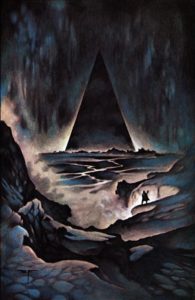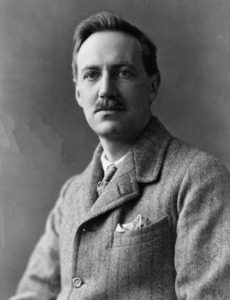
The Night Land has developed a notorious reputation over the years as one of the most forbidding and inaccessible works of classic science fiction. Even H.P. Lovecraft, no stranger to purple prose himself, struggled to make his way through it. “I’m a couple of hundred pages into ‘The Night Land,’” he wrote to a friend in 1934, “but it’s damn hard going. God, what a verbose mess.”
Clocking in at a hefty two hundred thousand words, the Night Land is already dated by the contemporary standards of its 1912 publication date, but rendered still more obscure by its intentionally archaic, faux-Elizabethan prose. Even back in the early twentieth century, this was baroque stuff, rife with artificially mannered and semicolon-laden paragraphs. The author himself knew that the work was a tough slog: When William Hope Hodgson failed to find an American publisher for the original British work, he redacted it to a novella of perhaps a tenth its original size. Nor was the this the last attempt to tame The Night Land. Author John Stoddard put forward a complete rewrite of the work as The Night Land, A Story Retold in 2011.

Recent Comments